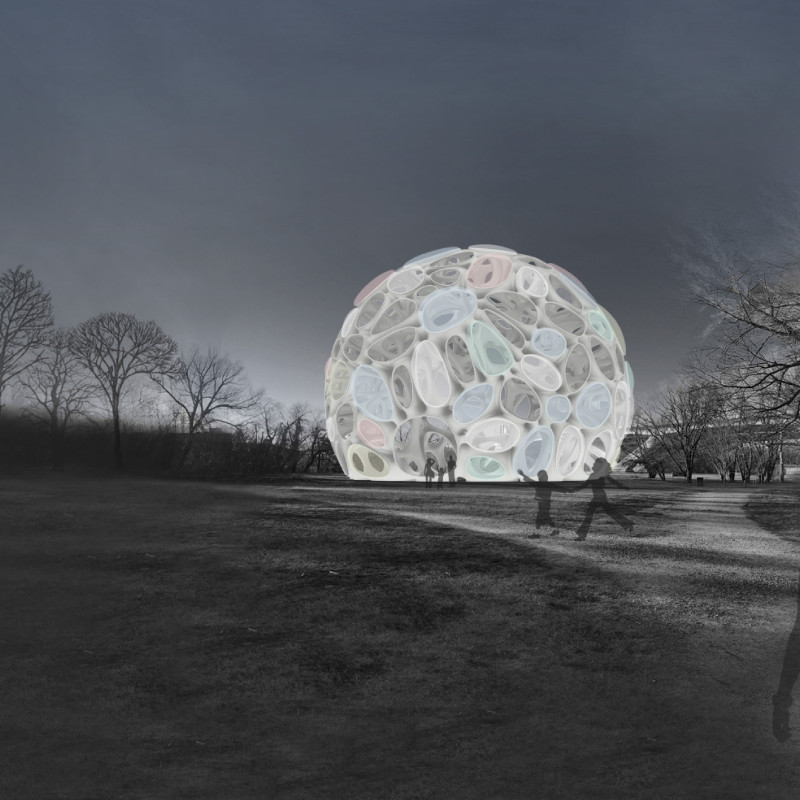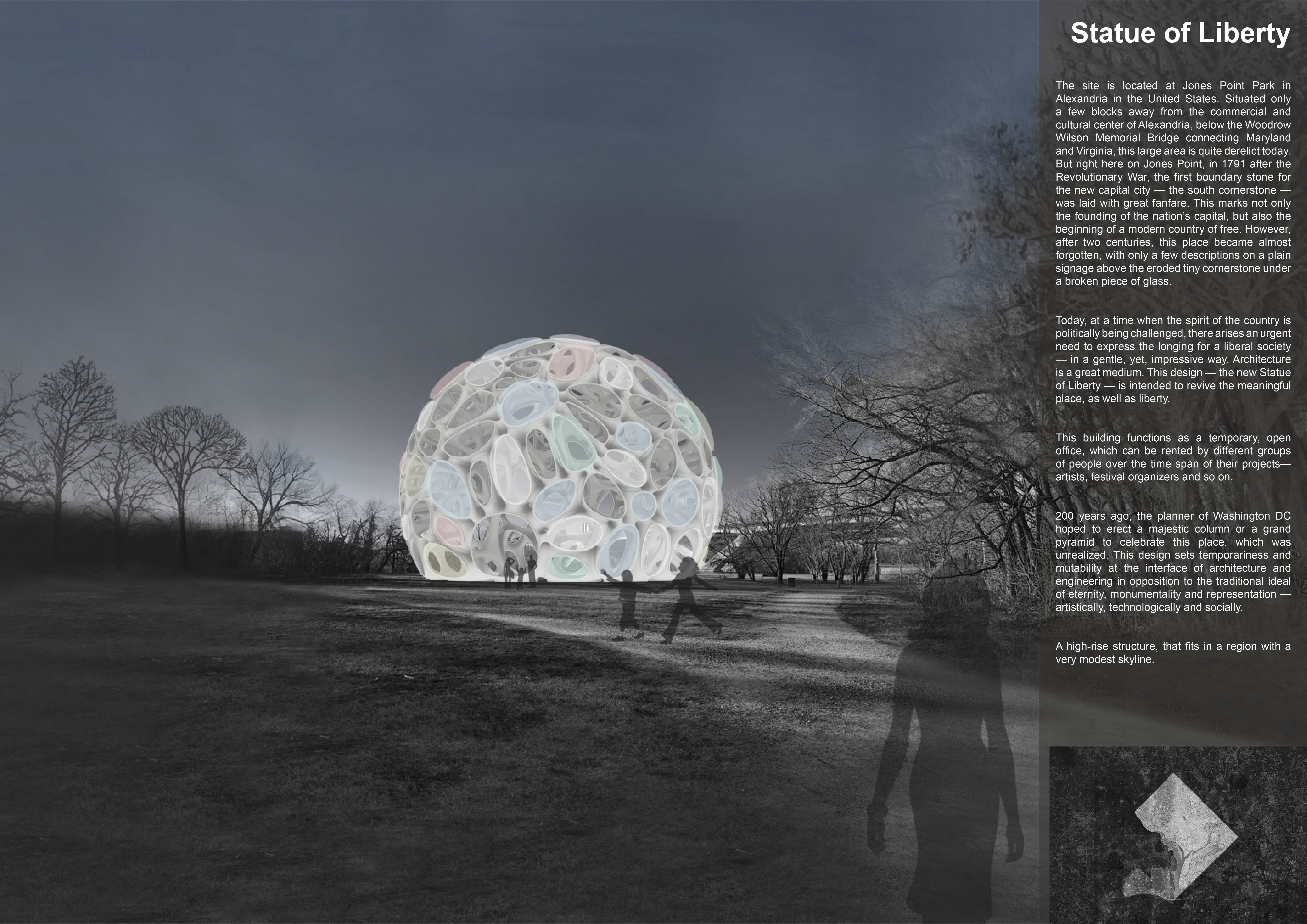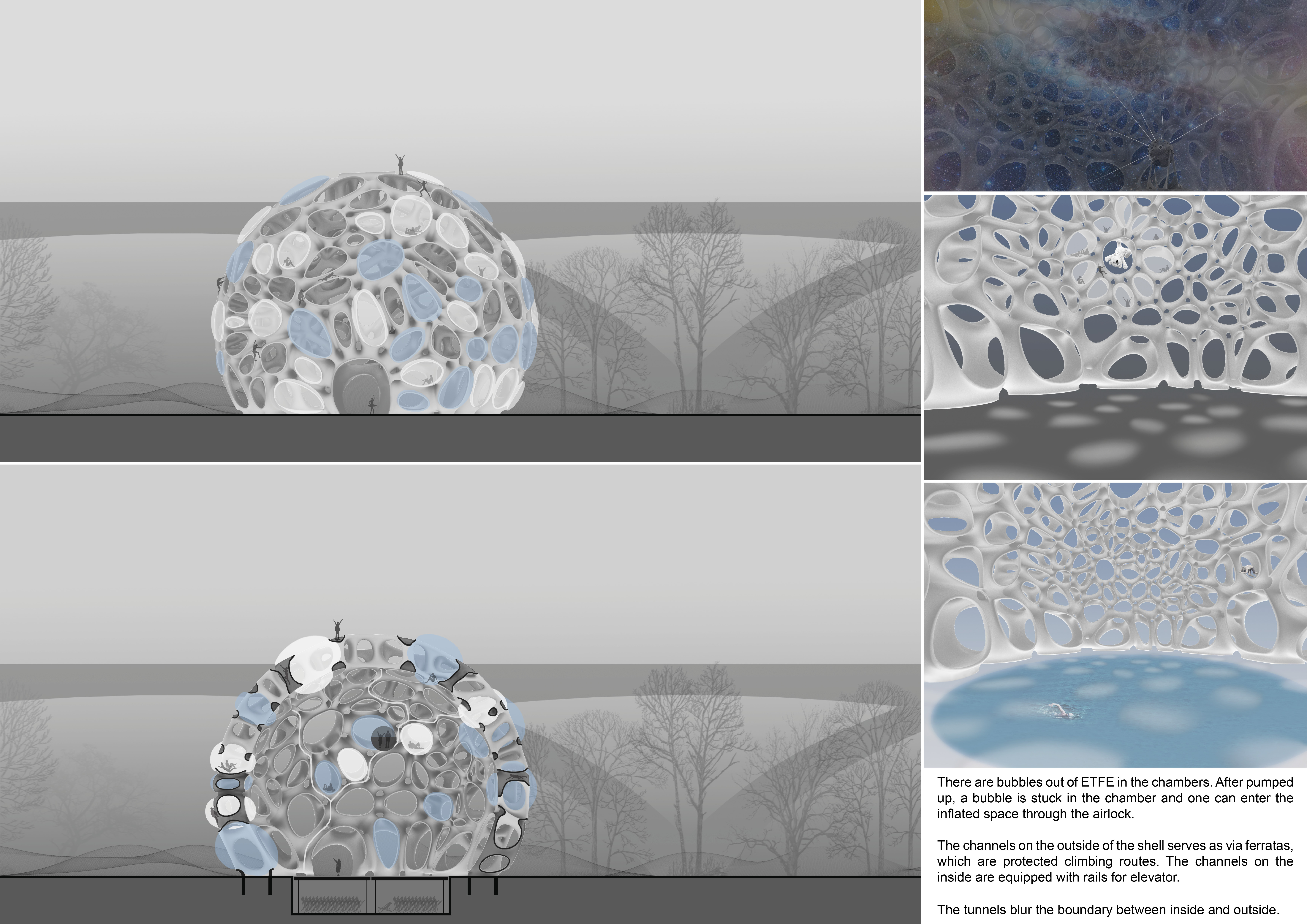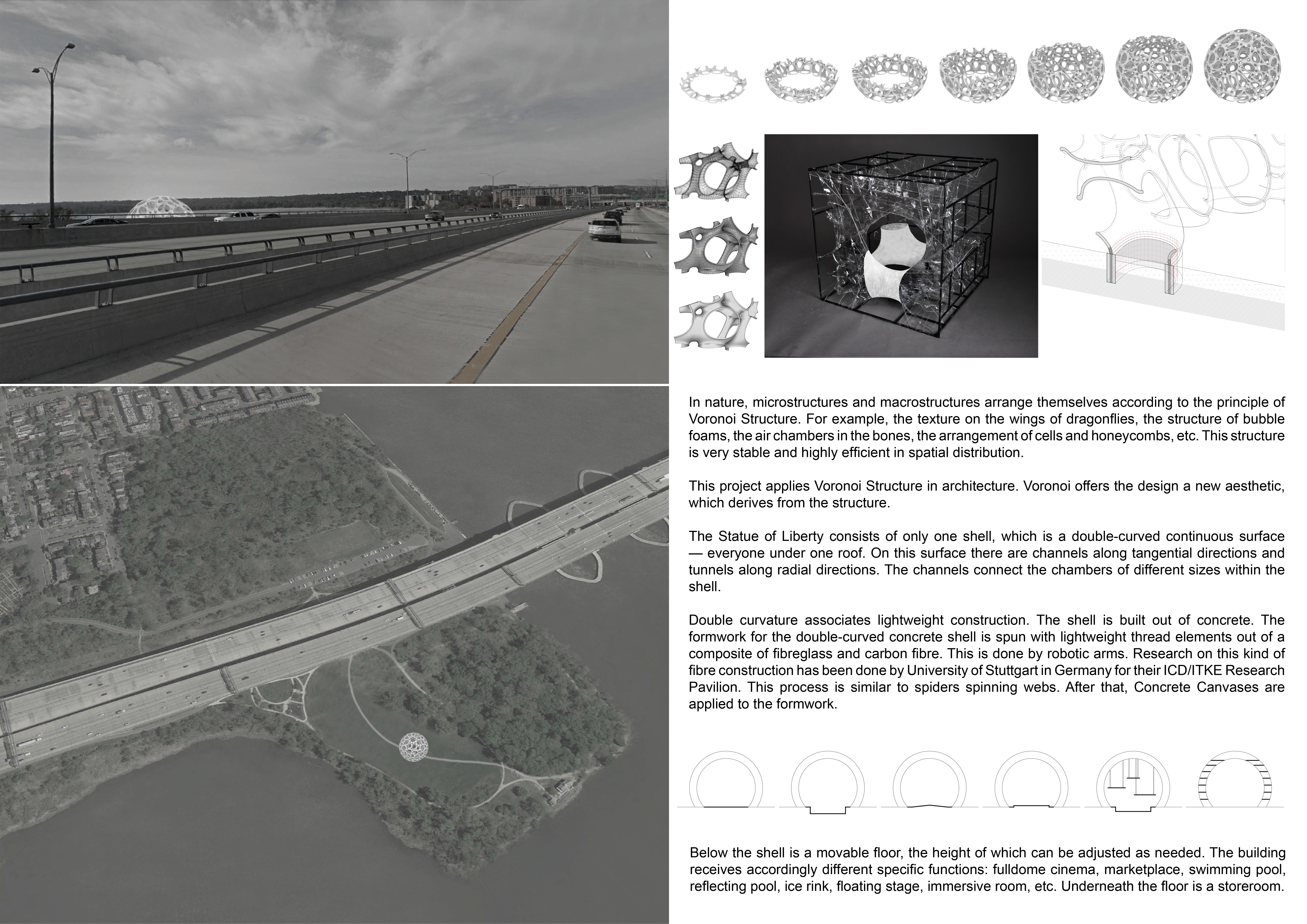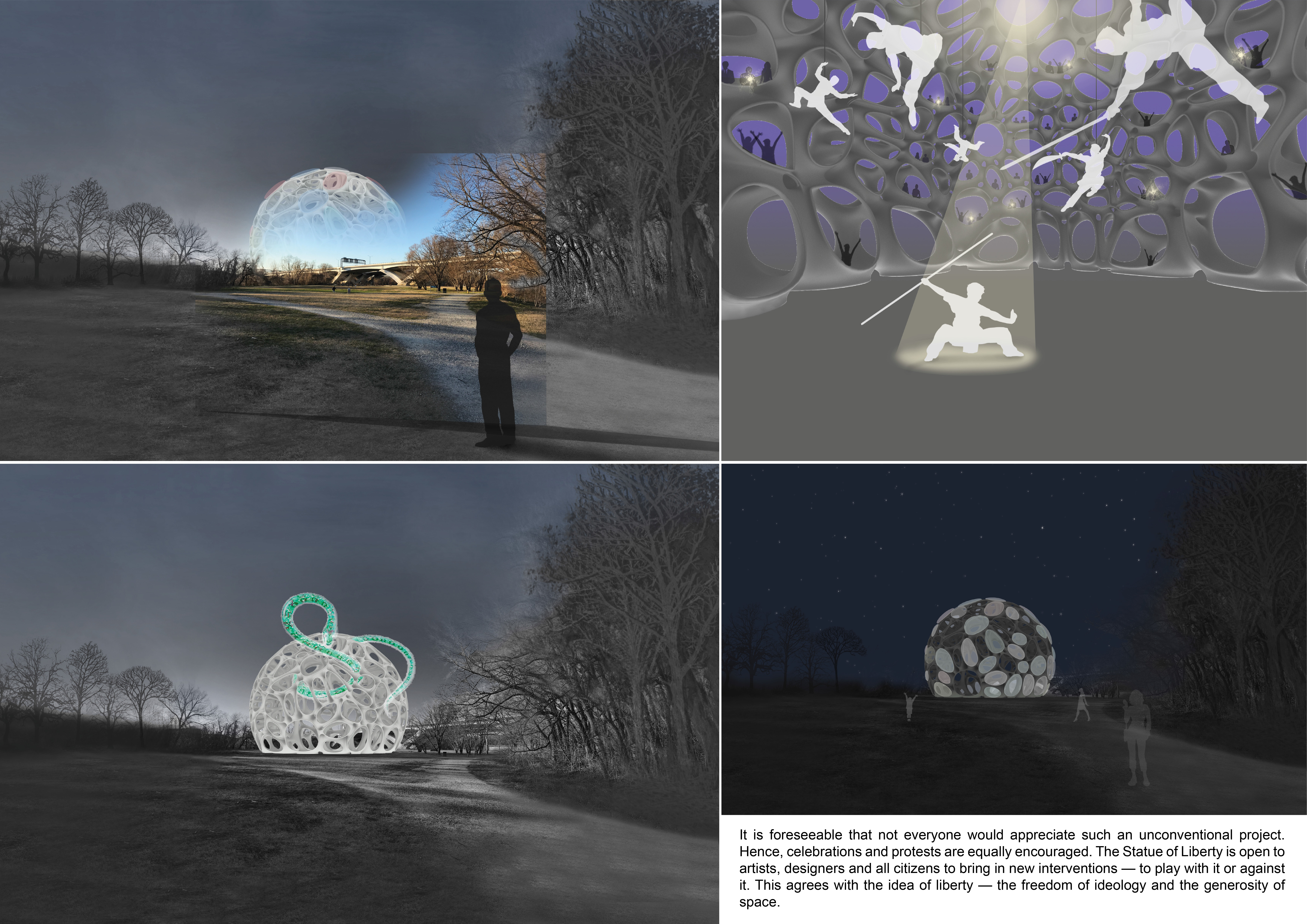5 key facts about this project
The project at Jones Point Park in Alexandria, United States, offers a modern take on historical significance while enhancing community engagement. Located at the site of the south boundary stone laid in 1791, the structure symbolizes the founding of the nation and its evolving identity. Designed to function as a temporary open office, it can host various activities, such as events for artists and festival organizers. This approach promotes a sense of flexibility and invites public interaction.
Design Concept
A continuous, flowing surface characterizes the design, integrating multiple functions into a cohesive whole. This form encourages interaction and highlights the need for adaptable public spaces. By avoiding conventional boundaries, the structure creates an inviting area that encourages visitors to explore and engage with their environment.
Spatial Organization
The structure features navigable channels and chambers, presenting a distinct spatial arrangement that accommodates diverse activities. These pathways create connections between indoor and outdoor areas, promoting various forms of public interaction. This layout enhances the building's functionality and fosters a sense of community among users.
Materiality and Construction
Concrete serves as the primary material for the shell of the building, offering durability and a contemporary appearance. Ethylene tetrafluoroethylene (ETFE) is employed in the chambers, providing a lightweight and flexible component that contributes to the overall adaptability of the design. Additionally, lightweight thread elements are used in the formwork of the double-curved shell, showcasing a construction method that mimics natural processes.
The design challenges traditional ideas of monumentality by focusing on openness and fluidity. It welcomes a variety of public expressions, such as celebrations and protests, reinforcing the ongoing narrative of liberty. This thoughtfulness culminates in a structure that is both responsive to its historical context and relevant to its contemporary purpose.


